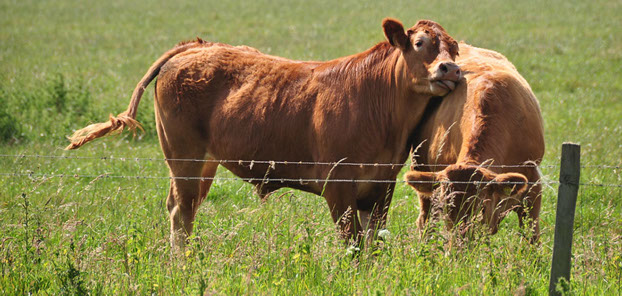A large infestation of lice in cattle can be very harmful to the animals’ health as well as detrimental to a herd’s productivity. In fact, lice can cause extreme irritation, decreased milk production, appetite and feed conversion as well as blood loss, damage to the cows’ hide and unnecessary stress.
In organic operations, producers require a natural solution however, even in operations that do not require organic management strategies, a natural, chemical-free alternative is often preferred.
Strong prevention management practices focusing on nutrition and environment should always be employed to help decrease the likelihood of a severe infestation. Steps that can be taken to help prevent an infestation include:
- Keeping animals outdoors as much as possible
- Avoiding close confinement of the animals
- Providing the herd with quality feed and essential minerals
- Creating a stress free environment
- Providing a clean, dry environment
- Carefully observing new animals before introducing them into the herd (for example, it is often a good idea to keep the new animal in confinement for the first few weeks so that it can be determined that the animal is not carrying lice)
- Ensuring that the herd does not come in contact with other herds
According to the Organic Agriculture Centre of Canada, in the case of an infestation, diatomaceous earth can be an effective natural control for lice.
It has been noted by producers that diatomaceous earth (often in combination with other elements such as sulphur) applied externally to an animal can help to kill parasites such as lice.
For more information on how to identify and evaluate the severity of an infestation, please see: Monitoring Lice in Livestock
Image by xlibber



